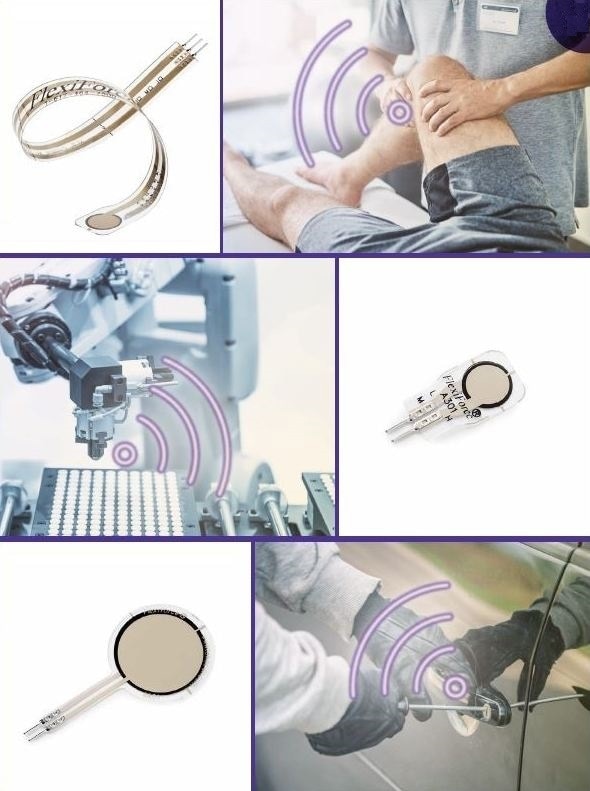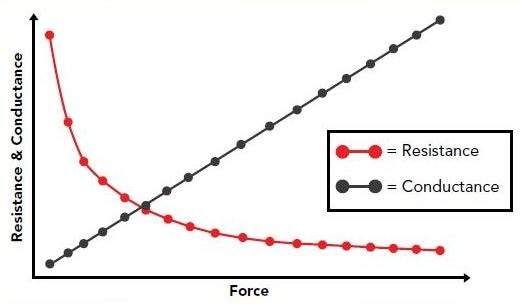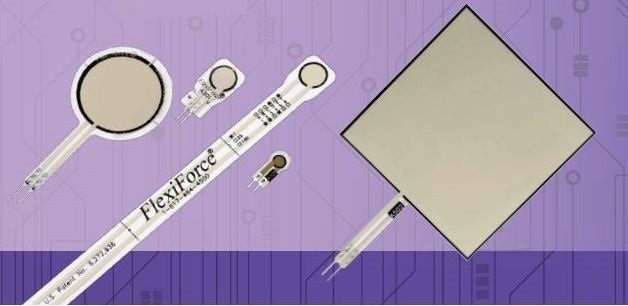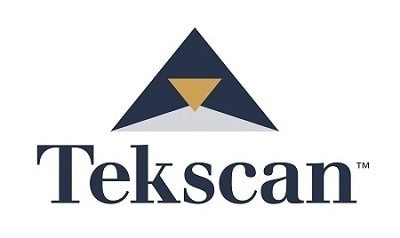As a reader of this eBook, it is likely that there is already an understanding of the variety of roles that pressure and force exchanges perform in day to day life.
From a physician carrying out a manual assessment on a patient, to a robotic manufacturing system putting intricate components on an assembly, to a vehicle security system activating upon the detection of an intruder, the technology can be applied in the real world in a variety of ways.
Every impact, contraction, expansion, pull, push, movement, or touch that a system or device experiences are quantifiable and dynamic actions. Tactile sensing technologies give the user the ability to monitor and capture variations in force to create consistency within a process, along with the option to instantly prompt action in reaction to a change.
In the present day, design engineers are faced with a never-ending struggle to produce differentiated systems and devices with embedded applications that enhance efficiency and usability. Generally, the majority of well-known and recent design innovations showcase compact devices with smart applications that are accessible and use power efficiently.
To meet these growing requirements, the embedded sensor components that design engineers utilize to develop original and exciting capabilities should also hold similar qualities of being smart, simple, and small.
As such, FlexiForce™ touch sensors are the ideal opportunity as an embedded force sensor for design engineers to meet these benchmarks and produce force sensitive devices that are truly innovative.
The dynamic features of the technology, in combination with their successful performance in various operating environments and industries, makes FlexiForce a design-friendly force sensor.
New applications for FlexiForce sensors are being found daily, and this eBook will outline four original ways that FlexiForce sensors are utilized as an embedded component, evidencing these uses with real-world success stories.
These applications are in various industries, such as athletics, medical robotics, manufacturing process and quality control, and more.

A Smart, Simple and Successful Sensor
There are three most frequently used force sensor types in embedded systems and devices today: MEMS devices, load cells, strain gauges, and ultra-thin force sensitive resistors such as FlexiForce touch sensors.
MEMS devices, load cells, and strain gauge technologies are perfect for applications that need highly accurate force measurements, but also have difficulties from the perspective of integration, which can be particularly expensive for mass production.
Along with being a thin, dynamic, and less costly embedded sensor alternative, FlexiForce sensors have various applications to assist in developing smart, force sensitive devices.
Four Ways to Use FlexiForce Sensors
- Detect and Measure Relative Change in Force or Applied Load
- Detect and Measure the Rate of Change in Force or Applied Load
- Detect Contact and/or Touch
- Identify Force Thresholds to Trigger an Action
Benefits of a FlexiForce Sensor
FlexiForce sensors perform as a force sensing resistor in an electrical circuit. The resistance is very high when the force sensor is unloaded and this resistance falls when force is applied to the sensor. The change in resistance can be customized according to the application needs.

Thin and Flexible
- Paper-thin construction
- Sensors can be embedded in confined spaces, making them unobtrusive
Durable
- Performs in a majority of operating environments
- High-temperature selections are available (up to 204 °C)
Low Power
- More energy efficient when compared to alternatives
- Only simple electronics are needed
- Variety
- Different standard sensor sizes are available
- Solutions are customizable
What are FlexiForce Sensors?
FlexiForce tactile force sensors are super thin and dynamic printed circuits, which can be integrated into force measurement applications. They are employed to analyze the force between almost any two surfaces.
FlexiForce sensors are perfect for OEM products, as Tekscan can customize the features according to the particular needs of an application:
- Geometry: FlexiForce sensors can be created in various sizes and shapes, to adhere to the particular product and application needs.
- Ink technology: Tekscan provides three pressure-sensitive ink choices: standard, high temperature, and enhanced.
- Integration support: Tekscan’s team of application, mechanical, and electrical engineers have a breadth of experience in helping design engineers to fulfill successful product integration.
FlexiForce at Work
The next pages show the four defined uses for FlexiForce sensors in real-world applications.
Detect and Measure Relative Change in Force or Applied Load
FlexiForce touch sensors may be the solution for force sensitive applications that assess real-time differences in force, for example a shift in position, weight, or expansion of two contact surfaces.
They are particularly beneficial for applications with very sensitive or tight space limitations, such as in the example illustrated on the right.

CASE EXAMPLE: Ensuring the Safety of Robotic Surgical Systems
Once looked at with skepticism a few decades ago, surgeons and patients now appreciate that electronic medical device innovations such as robotic surgical systems can enhance the efficiency of a treatment process.
A robotic surgical system manufacturer was recently looking for a force sensing application to be used in a suture administration robot. They fixed a FlexiForce sensor into the clamping mechanism to analyze the amount of force applied during the administration of sutures.
The robot was automatically programmed to change its force output as it continued from one end of the incision to the other, which is very critical when applying sutures in areas that are near to sensitive tissue.
This man-machine haptic-feedback application shows an efficient way to manage a consistent and safe procedure.
Other Similar Applications:
- Robotic Manufacturing Systems
- Joystick or Controller Applications
- Physical Therapy Grip
- Machine Alignment and Setup (e.g. Nip Roll)
Detect and Measure the Rate of Change in Force or Applied Load
Combining a FlexiForce sensor with a timing method can produce applications that help the subject or operator to measure force changes throughout a period of time. This data can be utilized to assess consistency, performance, or reveal possible flaws before they occur.

CASE EXAMPLE: A Smart Method to Calculate Pedaling Power
Whether it’s striving to achieve a world record or reaching a personal best, statistics will always be embedded in athletic activities. Force sensing technology can allow an application to record key data on athletic performance.
One bicycle manufacturer fixed a FlexiForce sensor within their bike pedal design with the aim of measuring the power (force * velocity) given by the individual.
This system could measure the rider’s performance throughout the race, which could be utilized in more endurance training. Track designers can also make use of this data to evaluate the difficulty of their course, enhancing the entertainment value of the event.
Other Similar Applications:
- Velocity Control Tools
- CPR or Manual Therapy Administration
- Quantity Detection (Containers, Inventory Management, etc.)
- Monitoring Medication Levels (Autoinjector Applications)
Detect Contact and/or Touch
From softer glances or bumps, to damaging impact, each contact or touch tells a story. To record these moments, thereby understanding and controlling a device’s operating environment better, FlexiForce sensors could be the perfect method.

Image courtesy of MMAAZZ.
CASE EXAMPLE: Controlling Fill Line Impacts
Reducing loss and damage while high-throughput fill line operations take place is a key difficulty faced by engineers and production managers. Consequently, MMAAZZ (a Masitek division) created a solution that assesses the amount of force that a product copes with during the fill line process.
MMAAZZ created the PressureQC with the assistance of FlexiForce sensors. The PressureQC is a force sensing solution that correctly records forces applied to cans and bottles by robotic grippers, rail lines, and adjacent product units, throughout production.
As detailed above, customized FlexiForce sensors were embedded into a model of a product that could be sent through the process of manufacturing to relay and monitor force output. This data assists manufacturers in strongly decreasing losses and improving efficiency.
Other Similar Applications:
- Neuromuscular Rehabilitation
- HMI Touch Switch
- Window or Door Seal
- Vehicle Presence (Capacity)
Identify Force Thresholds to Trigger an Action
FlexiForce sensors can perform as an extremely sensitive smart switch to gather data for a communication system. This helps to decrease the necessity for human interaction in a particular process, a concept commonly known as the ‘Internet of Things,’ or IoT.

CASE EXAMPLE: ForceSensitive Security Systems
Whether items in storage mysteriously disappear over time or an intruder approaches a facility outside of opening hours, these measurable force exchanges can be a signal of foul play.
A security system developer created a force sensitive security pad placed on the floor enveloping a display case of expensive items. An ultra-thin FlexiForce sensor matrix was embedded into a pad design which looked the same as the floorboards surrounding the area.
After a particular weight threshold was detected, the pad would create a silent alarm, but not in instances where a lighter weight, for example, a brush sweep, would come in contact. An application similar to this could be created for shelving units, where a force sensitive system could track any strange differences in force, possibly signaling theft.
Other Similar Applications:
- Security or Theft Management
- Vehicle Presence (Occupancy)
- Package Delivery Theft
- On-the-Go Rehabilitation Equipment (Crutches, Wheelchairs, etc.)
Conclusion
Now, Let’s Put FlexiForce Touch Sensors To Work
It is now the time to evaluate how embedding force sensing technology into the reader’s products will give a competitive edge. The following four questions should be asked when defining the process:
- What force sensing technology can economically and effectively be integrated into the design of the product?
- What electrical or mechanical necessities or challenges may affect the choice of force sensing technology?
- Does the product need capturing force within a particular sensitivity range?
- Is the selection of force sensor assisted by a support group of expert engineers with knowledge in embedding force sensing technology?

Seeking Force Sensing Technology for your Application? Let’s start a conversation.
Tekscan understands the issues that design engineers face and the risks taken when embedding new technology.
Whether selecting a standard FlexiForce sensor or a customized design, Tekscan has proven experience in assisting design engineers to achieve high-value products with force sensing technology. The return on investment is delivered as confidence in the product design, a time-efficient development process, and an enhanced end-user experience.

This information has been sourced, reviewed and adapted from materials provided by Tekscan, Inc.
For more information on this source, please visit Tekscan, Inc.